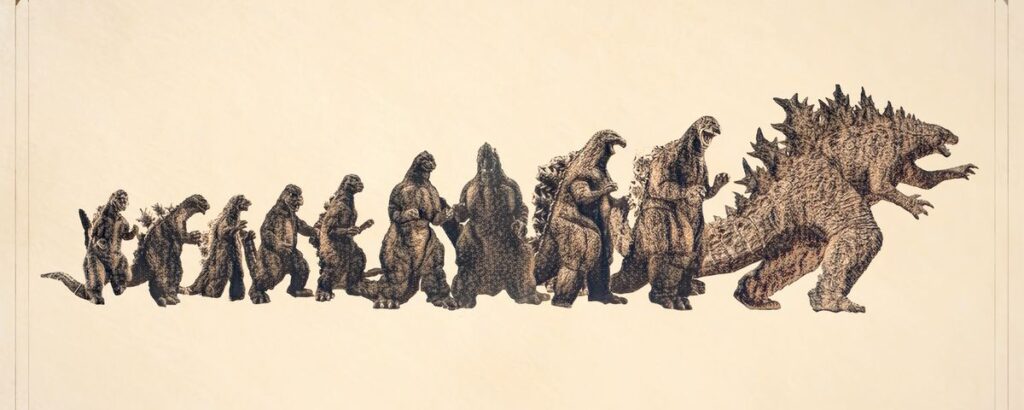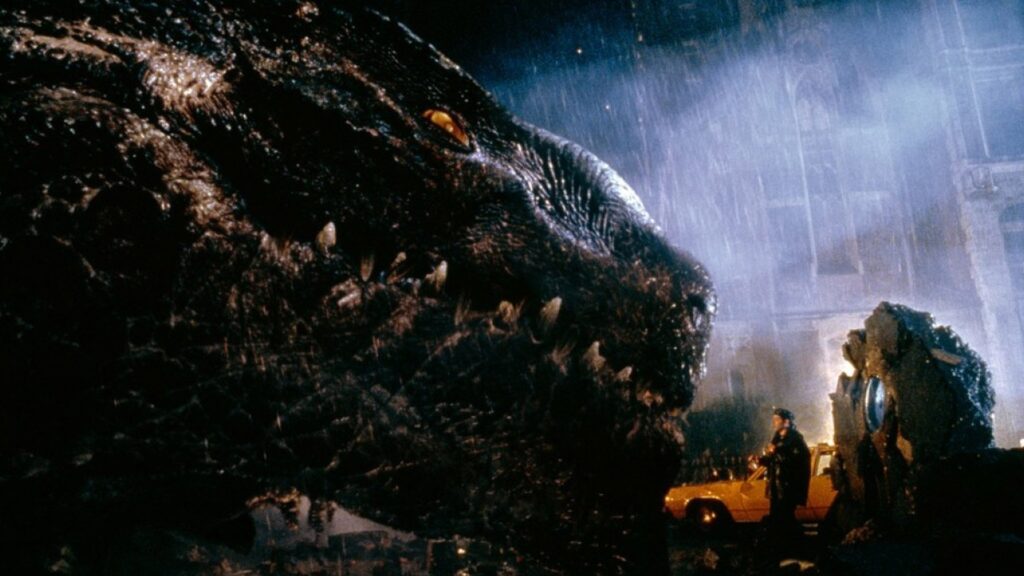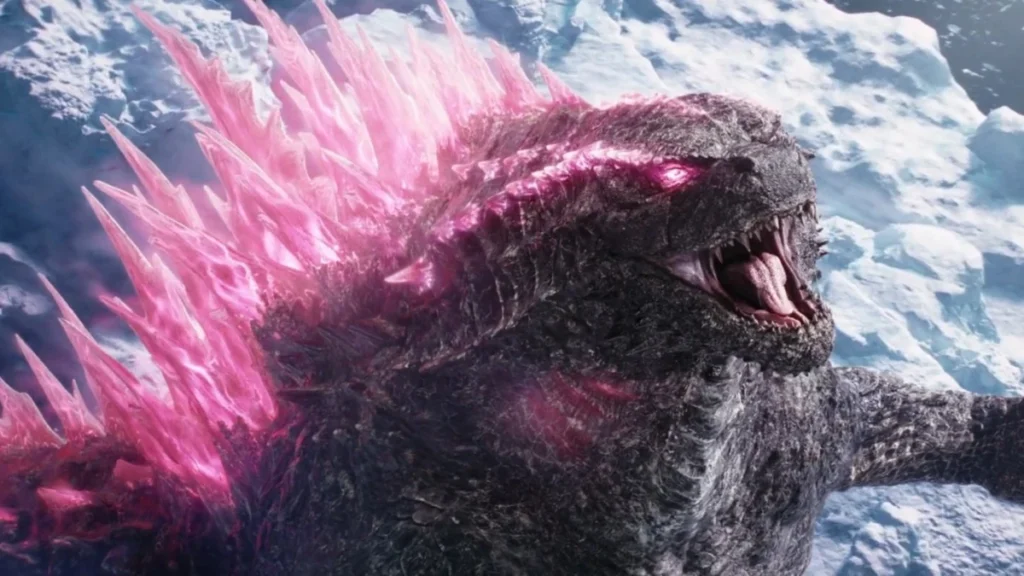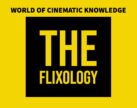How old is Godzilla Franchise?

Image Courtesy: Toho , Warner Bros.
The Godzilla franchise boasts a rich and extensive history that has captivated audiences for seventy years. Making its debut in 1954, the iconic kaiju monster has risen to become a cultural phenomenon, inspiring a multitude of films, TV series, and merchandise.
The Emergence of Godzilla
Known as Gojira in Japan, Godzilla first appeared in the film of the same name directed by Ishiro Honda. Premiering on November 3, 1954, the original Godzilla movie was a response to the atomic bombings of Hiroshima and Nagasaki, as well as the Lucky Dragon 5 incident. It served as a metaphor for the devastating power of nuclear weapons and the repercussions of human hubris. The movie was a tremendous success, receiving both critical acclaim and commercial prosperity, laying the foundation for the Godzilla franchise to become the longest-running film series in history.
The Transformation of Godzilla
Throughout the years, the Godzilla franchise has undergone changes and adaptations to reflect the evolving times. Initially depicted as a fearsome natural disaster, Godzilla evolved in subsequent films. During the Showa era (1954-1975), Godzilla transitioned into a protector of humanity, frequently engaging in battles against other monsters or extraterrestrial threats to Earth. The films of this period had a more light-hearted and whimsical tone, portraying Godzilla as a heroic figure.
The Heisei era (1984-1995) introduced a darker and more somber atmosphere to the franchise. Godzilla returned as a destructive force, but with a more intricate and sympathetic backstory. The advancements in special effects allowed for more realistic and detailed monster confrontations.
To date, four films have been released in the Monsterverse: “Godzilla” (2014), “Kong: Skull Island” (2017), “Godzilla: King of the Monsters” (2019), and “Godzilla vs. Kong” (2021). Godzilla x Kong ( 2024) Each installment builds upon the events of its predecessors, weaving together a cohesive narrative that spans multiple movies.
Godzilla Franchise 1998 onwards.

Image Courtesy: Rakuten TV
The Millennium era (1999-2004) marked a fresh start for the franchise, each film presenting a unique storyline. Godzilla’s appearance and abilities varied in each installment, offering fresh interpretations of the character. Godzilla is a 1998 American monster film directed by Roland Emmerich, it is a reboot of Toho Co Ltd.’s Godzilla franchise. First film to be produced by a Hollywood Studios and It is the 23rd film in the franchise. The film stars Matthew Broderick, Jean Reno, Maria Pitillo, Hank Azaria, and the movie was a worldwide success with a total gross of $ 379 Millio
In 2014, Hollywood released its own rendition of Godzilla, helmed by Gareth Edwards. This American adaptation brought a modern twist to the classic monster tale, captivating audiences worldwide.
The Monsterverse

Image Courtesy: Gojipedia
In 2014, Hollywood released its own rendition of Godzilla, helmed by Gareth Edwards. This American adaptation brought a modern twist to the classic monster tale, captivating audiences worldwide. In recent times, the film industry has witnessed a surge in the popularity of cinematic universes. From the Marvel Cinematic Universe to the DC Extended Universe, these interconnected series of movies have captivated audiences and revolutionized storytelling on the grand scale of the silver screen.
One such cinematic universe that has garnered a devoted following is the Monsterverse. So, what exactly is the Monsterverse? It is a shared fictional universe that revolves around colossal monsters, often referred to as “kaiju,” and the human characters who find themselves entangled in their world. This captivating universe was brought to life by Legendary Entertainment and Warner Bros. Pictures, with the inaugural film in the series being “Godzilla” in 2014.
What sets the Monsterverse apart is its ability to bring together iconic creatures from various franchises and reimagine them in a contemporary context. Alongside Godzilla, this universe showcases other legendary creatures such as King Kong, Mothra, and Rodan. Each film within the series delves into the mythology and history of these monsters, while also introducing new threats and challenges for them to confront.
To date, five films have been released in the Monsterverse: “Godzilla” (2014), “Kong: Skull Island” (2017), “Godzilla: King of the Monsters” (2019), and “Godzilla vs. Kong” (2021). Godzilla x Kong ( 2024) Each installment builds upon the events of its predecessors, weaving together a cohesive narrative that spans multiple movies.
The first film, “Godzilla,” reintroduced the iconic monster to a new generation of fans. Under the direction of Gareth Edwards, the movie showcased the awe-inspiring power and destructive force of Godzilla as he clashed with other creatures known as MUTOs. It served as a foundation for the expansive world of the Monsterverse, leaving audiences craving more.
Taking a different approach, “Kong: Skull Island” delved into the origins of King Kong. Set in the 1970s, the film follows a team of scientists and soldiers as they embark on an expedition to an uncharted island teeming with perilous creatures.
The Future of the Godzilla Franchise
The potential for a crossover between the Monsterverse and Pacific Rim franchise has been a topic of discussion among filmmakers. While Steven S. DeKnight and Guillermo del Toro have expressed interest in the idea, it remains a hypothetical possibility. Mike Garcia emphasized the step-by-step process of the Monsterverse, focusing on ensuring the quality of each piece, particularly with “Godzilla: King of the Monsters” and “Godzilla vs. Kong.”
Adam Wingard shared his ideas for future Monsterverse films, highlighting the original purpose of building up to the clash between Godzilla and Kong. The Monsterverse stands at a “crossroads,” with its future dependent on audience support. Josh Grode confirmed that Legendary Entertainment has multiple concepts for future Monsterverse films, demonstrating their dedication to expanding the universe. While the potential crossover remains uncertain, ongoing interest and discussions suggest it could be a direction for future movies. Audience support will be pivotal in shaping the future of the Monsterverse and determining the continuation of these colossal cinematic experiences.
The Conclusion
The evolution of the Godzilla franchise showcases its enduring appeal and ability to adapt to changing times. From its origins as a symbol of post-war Japan to its status as a global pop culture icon, Godzilla has captivated audiences for over six decades.
Whether portrayed as a destructive force or a defender of humanity, Godzilla continues to resonate with fans around the world. With upcoming films and new interpretations on the horizon, the future of the Godzilla franchise looks as promising as ever.
Frequently Asked Questions
Toho Co., Ltd.; produced 38 films in the Godzilla franchise, total 33 Japanese films and 5 American Films.
The Godzilla Franchise is owned by an American MonsterVerse Co and co owned by Japanese company Toho Co Ltd.
Toho co ltd sold the film rights of the Godzilla series to Sony Pictures Entertainment in 1992 for production of Godzilla movies.
Toho Co Ltd, based out in Japan owns the Trademark of Godzilla.
The Godzilla Franchise is been in existence since 1954, completing seventy years.
